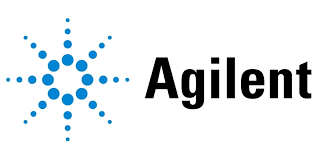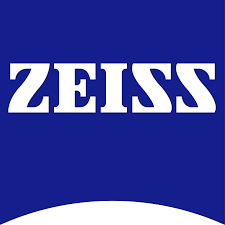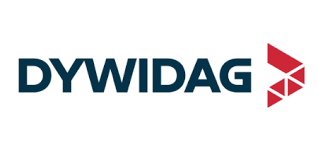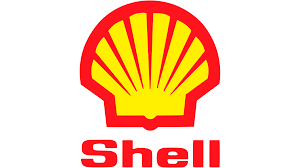Underfloor Heating Market Report
Published Date: 15 December 2025 | Report Code: underfloor-heating
Underfloor Heating Market Size, Share, Industry Trends and Forecast to 2033
This market report provides a comprehensive analysis of the Underfloor Heating industry, covering key trends, market dynamics, and future forecasts from 2023 to 2033. Insights on market size, segmentation, technology, and regional performance are included for strategic decision-making.
| Metric | Value |
|---|---|
| Study Period | 2023 - 2033 |
| 2023 Market Size | $7.50 Billion |
| CAGR (2023-2033) | 6.8% |
| 2033 Market Size | $14.74 Billion |
| Top Companies | Raychem, Warmup, Uponor, Rehau |
| Last Modified Date | 15 December 2025 |
Underfloor Heating Market Report (2023 - 2033)
Underfloor Heating Market Overview
Customize Underfloor Heating Market Report market research report
- ✔ Get in-depth analysis of Underfloor Heating market size, growth, and forecasts.
- ✔ Understand Underfloor Heating's regional dynamics and industry-specific trends.
- ✔ Identify potential applications, end-user demand, and growth segments in Underfloor Heating
What is the Market Size & CAGR of Underfloor Heating market in 2023?
Underfloor Heating Industry Analysis
Underfloor Heating Market Segmentation and Scope
Tell us your focus area and get a customized research report.
Underfloor Heating Market Analysis Report by Region
Europe Underfloor Heating Market Report:
Europe remains a leading market for Underfloor Heating, with projections to rise from USD 1.85 billion in 2023 to USD 3.63 billion by 2033. Factors such as stringent energy regulations and a strong push towards sustainable building practices are key drivers.Asia Pacific Underfloor Heating Market Report:
The Asia Pacific region is poised for significant growth, with the market size expected to increase from USD 1.47 billion in 2023 to USD 2.89 billion by 2033. This growth is underpinned by rapid urbanization, government initiatives for energy-efficient buildings, and increased disposable incomes among consumers.North America Underfloor Heating Market Report:
North America will see considerable market growth, moving from USD 2.84 billion in 2023 to USD 5.57 billion in 2033. This is driven by a robust construction sector and a rising awareness of the benefits of UFH, particularly in new eco-friendly homes.South America Underfloor Heating Market Report:
In South America, the Underfloor Heating market is projected to rise from USD 0.32 billion in 2023 to USD 0.64 billion in 2033. Key markets like Brazil and Argentina are investing in energy-efficient building practices, which is expected to drive the adoption of UFH systems.Middle East & Africa Underfloor Heating Market Report:
The Middle East and Africa market is expected to expand from USD 1.02 billion in 2023 to USD 2.01 billion by 2033. Growing investments in real estate and infrastructure development projects are anticipated to propel the adoption of UFH technologies in this region.Tell us your focus area and get a customized research report.
Underfloor Heating Market Analysis By Product Type
Global Underfloor Heating Market, By Product Type Market Analysis (2023 - 2033)
In the Underfloor Heating market, Electric Underfloor Heating is projected to dominate the market share, anticipated at 63.09% in 2023 and stable through 2033. Water Underfloor Heating is also significant, comprising 22.34% of the market share. Components play a smaller role, though they are essential for system efficacy. Innovations in product types are enhancing energy efficiency and system effectiveness.
Underfloor Heating Market Analysis By Application
Global Underfloor Heating Market, By Application Market Analysis (2023 - 2033)
The residential segment is the largest application for underfloor heating, constituting an estimated market size of USD 4.73 billion in 2023 and growing to USD 9.30 billion in 2033. It accounts for 63.09% of the total market, followed by commercial applications, which hold a 22.34% share, and industrial applications at 14.57%. The growth of residential applications is largely driven by a rise in new constructions and renovations focusing on energy efficiency.
Underfloor Heating Market Analysis By Control System
Global Underfloor Heating Market, By Control System Market Analysis (2023 - 2033)
The market for manual control systems currently dominates the Underfloor Heating solutions with an 80.61% market share in 2023. Nevertheless, the smart control systems segment is gaining traction, expected to grow as user demand for energy-efficient and personalized heating solutions rises. Both control systems are significant for enhancing user experience.
Underfloor Heating Market Analysis By Installation Type
Global Underfloor Heating Market, By Installation Type Market Analysis (2023 - 2033)
New build installations dominate the Underfloor Heating market with a significant share (80.61%) currently projected to increase towards 2033. Retrofit installations are also on the rise, catering to existing buildings retrofitting for improved energy efficiency. The balance between these installation types is set to influence future market dynamics as building practices evolve.
Underfloor Heating Market Trends and Future Forecast
Tell us your focus area and get a customized research report.
Global Market Leaders and Top Companies in Underfloor Heating Industry
Raychem:
Raychem is a leading innovator in heat tracing and floor heating systems. Their advanced electric underfloor heating cables and mats have made them a popular choice for energy-efficient solutions in various applications.Warmup:
Warmup is known for providing intelligent underfloor heating solutions, focusing mainly on electric systems for residential and commercial use, offering products with superior energy efficiency and user-friendly controls.Uponor:
Uponor specializes in water-based underfloor heating systems and is heavily involved in sustainable building technologies, providing integrated solutions for both new builds and retrofitting projects.Rehau:
Rehau offers high-quality heating solutions, including systems for underfloor heating, which prioritize sustainability and efficiency, making them a key player in the market.We're grateful to work with incredible clients.









FAQs
What is the market size of underfloor heating?
The global underfloor heating market is projected to reach approximately $7.5 billion by 2033, with a notable CAGR of 6.8% from 2023. This growth reflects a rising adoption of energy-efficient heating solutions across various sectors.
What are the key market players or companies in the underfloor heating industry?
Key players in the underfloor heating industry include Danfoss, Uponor, REHAU, and Warmup. These companies leverage technology and innovation to maintain a competitive edge, focusing on growth through product enhancements and strategic partnerships.
What are the primary factors driving the growth in the underfloor heating industry?
Growth is driven by increasing energy efficiency awareness, advancements in heating technology, government initiatives for sustainable buildings, and rising demand in residential and commercial sectors for improved indoor comfort.
Which region is the fastest Growing in the underfloor heating market?
North America is currently the fastest-growing region in the underfloor heating market, expected to expand from $2.84 billion in 2023 to $5.57 billion by 2033. This growth is supported by increasing construction activities and consumer preferences for radiant heating systems.
Does ConsaInsights provide customized market report data for the underfloor heating industry?
Yes, ConsaInsights offers customized market report data tailored to specific requirements in the underfloor heating industry. Clients can request targeted insights that align with their unique business goals.
What deliverables can I expect from this underfloor heating market research project?
Deliverables typically include comprehensive market analysis reports, growth forecasts, competitive landscape assessments, and insights into consumer dynamics, as well as detailed segmentation across regions and applications.
What are the market trends of underfloor heating?
Market trends show a growing preference for electric systems, especially in residential settings, alongside innovations in smart controls. Retrofit projects are also gaining traction, reflecting a shift in consumer demands towards energy-efficient solutions.
